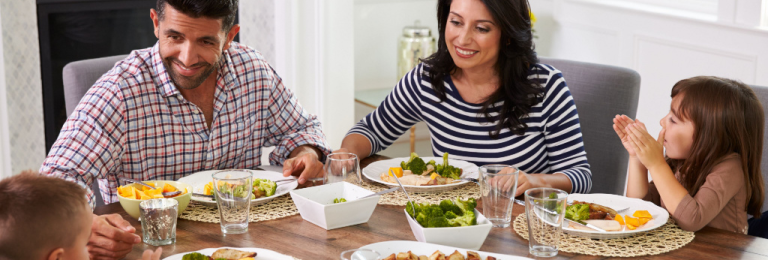The Eating Area
Helping children build a positive relationship to food can set them up for a lifetime of good health. One way to build positivity is by establishing an eating environment that is focused on food and free of distractions. Eating with others, like our family and caregivers around a table has been shown to improve children’s relationship with food, their intake of nutritious foods and their mental health and connectedness. As much as possible, take the time to have set meal and snack times and sit down to eat and enjoy the food.
Here are some tips to create a positive eating space:
• Set the table. We eat with our eyes first and a visually appealing, meal-focused table can set the stage for a positive mealtime. Put away toys and books and clean the surface well. Consider placemats (try our activity for making some with the children) Use child-size chairs, bowls, cups and utensils as available and appropriate by age.
• Turn off screens (televisions, tablets and phones) both for children and caregivers during mealtime. This not only limits exposure to advertising but also distractions that impact a person’s ability to feel their own hunger and fullness cues in their body.
• Add posters and images. Seeing a variety of colourful and nutritious foods that children are enjoying can inspire others. Check out our posters for building food literacy and a positive environment for feeding.
Being a role model:
All caregivers can be role models during mealtime by taking the time to sit down and eat with children. This gives the opportunity to engage with them in a neutral way about the variety of foods we may be eating. For more information about being a role model and positive mealtime conversations visit: https://appetitetoplay.com/healthy-eating/tips-ideas/being-role-model
Limiting distractions:
Putting away toys and turning off screens is important at mealtimes to minimize distractions but what if some children do not want to eat the meal or snack being offered and continue to play? This can be a distraction to others trying to enjoy their food. Although the Division of Responsibility in feeding establishes that children should decide if and how much they will eat, as caregivers we can still expect them to sit at the table and have a positive time together.
